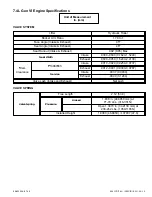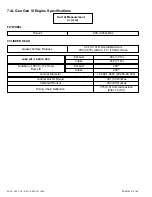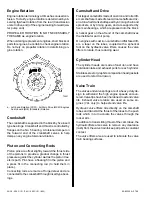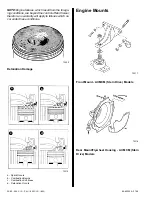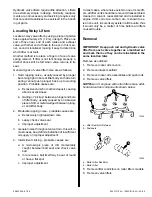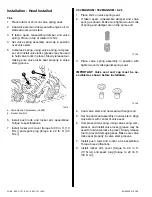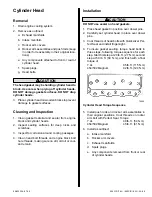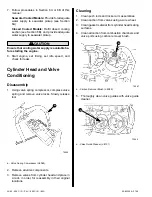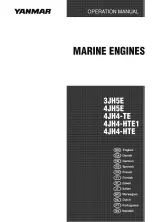
3A-16 - 454 C.I.D. (7.4L) / 502 C.I.D. (8.2L)
90-823224--2 796
Engine Rotation
Engine rotation terminology at times has caused con-
fusion. To clarify, engine rotation is determined by ob-
serving flywheel rotation from the rear (transmission
or stern drive end) of the engine looking forward (wa-
ter pump end).
PROPELLER ROTATION IS NOT NECESSARILY
THE SAME as engine rotation.
When ordering replacement engines, short blocks or
parts for engines, be certain to check engine rotation.
Do not rely on propeller rotation in determining en-
gine rotation.
72001
a
a - Left-hand Rotation (CCW) - All Stern Drive (MCM) Engines
And Inboard (MIE) (Standard) Rotation
Crankshaft
The crankshaft is supported in the block by five insert
type bearings. Crankshaft end thrust is controlled by
flanges on the No. 5 bearing. A torsional damper on
the forward end of the crankshaft serves to help
dampen any engine torsional vibration.
Piston and Connecting Rods
Piston pins are offset slightly toward the thrust side
of the pistons to provide a gradual change in thrust
pressure against the cylinder wall as the piston trav-
els its path. Pins have a floating fit in the piston and
a press fit in the connecting rod (to hold them in
place).
Connecting rods are made of forged steel and are
connected to the crankshaft through insert type bear-
ings.
Camshaft and Drive
Flat tappet camshafts made of cast iron and roller lift-
er camshaft are made of steel. All camshafts are driv-
en at one-half crankshaft speed by a timing chain and
sprockets, or by timing gears, and are supported by
five main bearings, which are pressed into the block.
A helical gear on the aft end of the camshaft drives
the distributor and oil pump.
On engines with cast iron camshaft and flat faced lift-
ers, a taper on the lobes, coupled with a spherical
foot on the hydraulic valve lifters, causes the valve
lifters to rotate, thus reducing wear.
Cylinder Head
The cylinder heads are made of cast iron and have
individual intake and exhaust ports for each cylinder.
Stainless steel or graphite composition head gaskets
are used to retard corrosion.
Valve Train
The valves and valve springs are of a heavy-duty de-
sign to withstand the high engine speeds encoun-
tered. Valve tips have been hardened to extend valve
life. Exhaust valve rotators are used on some en-
gines (7.4L only) to help extend valve life.
Hydraulic valve lifters ride directly on the camshaft
lobes and transmit the thrust of the lobes to the push
rods which in turn actuate the valves through the
rocker arm.
In addition to transmitting thrust of the cam lobes, the
hydraulic lifters also serve to remove any clearance
(lash) from the valve train to keep all parts in constant
contact.
The valve lifters also are used to lubricate the valve
train bearing surfaces.












